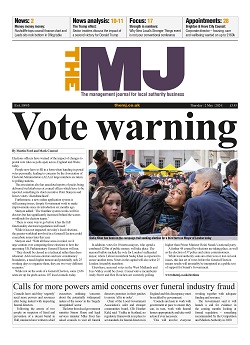There has been a protracted debate about whether the Government has made progress on its ambition to ‘level up’. It has centred around what the Government has promised, rather than what has been delivered, but this is beginning to change.
Recent analysis revealed that less than 3% of the Government’s flagship £4.8bn Levelling Up Fund was spent in 2021-22 – little more than £107m in total. That falls well short of the £600m it originally estimated.
The £220m Community Renewal Fund paints a similar picture. In the Government’s pursuit for shovel-ready projects, it asked that all projects be completed by March 2022. But the Government didn’t get the funding out the door when it expected, and, as a result, extended the deadline till June 2022.
The mea culpa employed by the Department for Levelling Up was that pent-up demand threw its plans off course, but it is unclear why it did not anticipate authorities would seek out funding given they have been tightening their belts for a decade.
More recently, the Government extended the deadline for the second time – until January 2023. Less than 3% of projects funded by the Community Renewal Fund were completed by June 2022, just 13 out of 477.
Why is very little levelling up taking place on the ground? The Government has cited inflation, supply chain disruption and the prospect of recession. These are real concerns, yet they alone do not account for its paralysis.
Attention has also turned to capacity in local government. To be sure, capacity is a barrier in many cases – and IPPR North estimates the local government workforce has fallen by 31% since 2010 – but these projects were, for the most part, delivered by the voluntary and charity sector.
Navigating 117 short-term, competitive bidding streams has understandably placed a burden on local government’s workforce too. Despite the commitment to ‘rationalise’ the funding regime, in recent weeks the Government has announced the second tranche of the competitive Changing Places Fund, a new £110m Rural England Prosperity Fund, a Freeport Programme in Wales and an ‘opt in’ Levelling Up Parks Fund to cover the costs of ‘bulb planting’ and ‘bird and bat boxes’.
Yet the real factor getting in the way of delivery on the ground, borne out by local experience, is Whitehall.
Actions taken centrally do not operate in a vacuum, and when the Government pushed back the start date of the Community Renewal Fund, it had a domino effect which has taken months to disentangle.
The delay by Government – although nearly a year ago – forced voluntary and community organisations to revise their plans, or in the vernacular of experts, ‘re-profile’ their ‘programmes of activity’. Contracts had to be re-negotiated and the groundwork laid to deliver services until March 2022 extended. The speed of delivery was undermined by delays in Whitehall rather than local government.
This is another unintended consequence of top-down policy-making and speaks to a broader tension between policy and implementation.
Policies designed centrally in ‘lab conditions’ rarely take account of the complexity of implementing them. This was especially true of the Community Renewal Fund, which was too rigid.
If the Government wants to see the funding it has allocated spent, it needs to simplify the current byzantine process. The current approach is serving no one.
Portsmouth City Council estimated it took 362 hours to apply for the Community Renewal Fund; Sunderland City Council say it took them 270 hours.
There are a number of levers available in this respect. For a start, being more purposeful about where need is in the future would enable the Government to avoid getting bogged down in hundreds of submissions.
The Levelling Up Fund is oversubscribed, with more than 500 submissions for the second round alone, which total £10bn. A fraction of submissions will be successful and many authorities will be disappointed.
Scrutinising how the funding regime operates and how formulae accord priority are essential to ensuring the funding made available can act as the seed capital to spur innovation, encourage investment from the private sector and, if the Government is open to learning from good practice across local government, inform policy at a national scale.
A second option to ensure projects can exist beyond the lifecycle of the funding stream that birthed them warrants consideration. Joining up funding streams may not always be possible, but where it is, it would give authorities greater certainty.
As it stands, the UK Shared Prosperity Fund (UKSPF) will not reach communities by the time projects funded by the Community Renewal Fund come to an end. Authorities carry the burden of risk should they commit to funding projects without the knowledge that their submissions to the UKSPF have been signed-off by Whitehall. No section 114 officer could countenance it.
Neither of these are a silver bullet, but they are a start. Time and again, I have heard from local authorities familiar with the Community Renewal Fund about what needs to be done in the future. The Government should listen.
Jack Shaw is a local government researcher with an interest in regional inequalities
@JackTShaw



